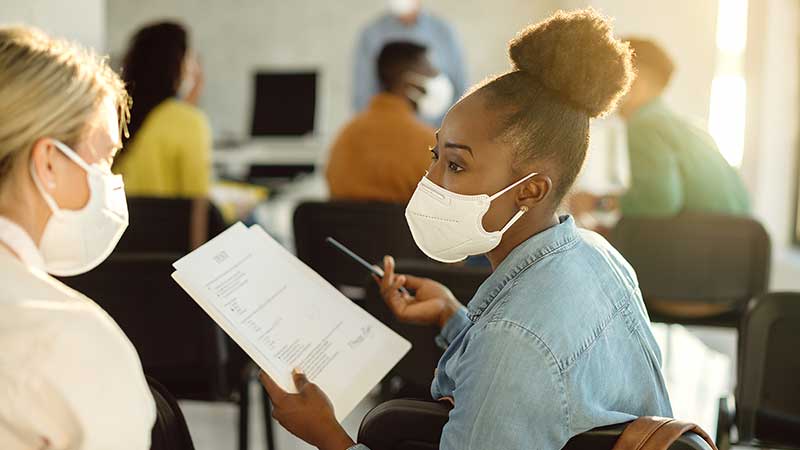
Community colleges form a backbone of our nation’s higher education system, enrolling more than one-third of all U.S. college students. Already widely admired, the colleges have strong ties to their communities, and the pandemic has only strengthened these ties.
That’s one of the conclusions of a recent excellent report from Inside Higher Ed, “Pandemic Lessons from Community Colleges.”
Based on a longitudinal study of 30 students who started at two large Midwestern community colleges in 2014, the report by Xueli Wang offers persuasive evidence that community colleges did a very good job— in several ways—of preparing students for the pandemic.
First, the colleges equipped students with practical knowledge, research skills, and real-world applications—capacities that helped the students assess and adapt to the abrupt changes the pandemic brought. Also, community college students were accustomed to getting coursework and communications through technology platforms. The students—many of whom face the daily challenge of juggling work, family, and school—were resilient in confronting these new challenges. And they were engaged, both with a diverse college population and as members of the communities beyond their colleges.
These are some of the report’s general conclusions. For a more specific take, I recently talked with Russell Lowery-Hart, president of Amarillo College in the Texas Panhandle.
Amarillo College is widely known for its culture of caring for students, and for leveraging their successes to benefit the larger community. But that culture was severely tested during the first months of the pandemic, Lowery-Hart said.
And he should know, having spent 15 weeks at the help desk in his campus’ student services center and fielding hundreds of questions and pleas for help. The challenges were many: The Amarillo College president said 20 percent of his students lacked access to technology when the school shifted to all-online learning; the need for regular tutoring was magnified; food security became an issue for many students, and the demand for mental health counseling skyrocketed.
So the college and community adapted. Amarillo assigned every employee (from professor to janitor) a list of 10 students to check on weekly. With assistance from the larger community, the services of the food pantry were greatly expanded. The student center was kept open to give students better access to technology. A heartening result was that the withdrawal rate for that spring term was actually 15 percent lower than the rate the previous year.
“Things that would have taken 10 to 15 years to change, we’ve done overnight,” Lowery-Hart said. “But our community can’t afford us to fail.”
Lowery-Hart recognizes that the results the college produces reverberate through the entire community. He estimates that every 10 percentage-point increase in Amarillo’s attainment rate raises local domestic economic production by 22 percent.
“This isn’t just about doing the right thing for our students,” he said. “It is about the economic future of our community.”
The practical experience from Amarillo dovetails neatly with the recommendations in the Inside Higher Ed report. Asked what more their colleges could have done, the students said they needed help to handle stress, manage their time, keep up with evolving technology, and feel comfortable seeking support from others in the community. And when that support from the community is received, students are more likely to want to give back. “What I do with my time needs to be stuff that matters,” one student said in the report. “It needs to be useful to the world as a whole or to the people around.”
Those interconnections—among colleges, students, and communities—have proven more important than ever during the pandemic.
I would argue that colleges and universities are coming to understand their value lies in the success of the people they serve, not in any characteristics of the institutions themselves. While colleges and universities take great pride in the success of the students they graduate—as they should—the best ones know their mission is to serve the broader community.
In fact, that may be one of the pandemic most important and enduring lessons.
Jamie Merisotis is the president and CEO of Lumina Foundation and the author of “Human Work in the Age of Smart Machines.”
